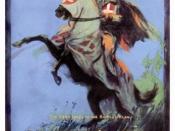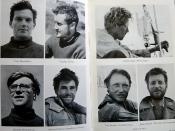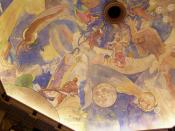Mankind, engaging in war, driven by whatever instincts guide him, seeks to keep the defeats and victories of battle in his memory and on his conscience. To accomplish this men have used paint and canvas, ink and paper, or instrument and song in their effort to communicate the tragedy and glory of war. Never, before the career of D.W. Griffith had anyone attempted to bring the subject to film. The result of his efforts, weaknesses aside, mark a change in attitude towards film as a media. Perhaps audiences previously going to a picture expected emotional manipulation. After all, years before the film Birth of a nation, makers of film employed techniques to evoke pathos from viewers; whether through the use of a sobbing mother, a frightened child or what have you. In this respect the film was not a ground-breaker; However, through its effective use of devices such as symbolism, foreshadowing and allusions, as well as building on and arguably perfecting film techniques such as continuity editing, intercutting and close-ups, he transformed film from mere entertainment to art and propaganda.
To present and explore a theme, symbolism is used everywhere in literature. Whether the image is subtle or obvious it is regardless a sign of considerable calculation and effort. In Birth of a nation Griffith places symbols everywhere, in doing this he merges literary devices of written works with his own visual works. For instance, the parched corn symbol in the scene where the southern army is eating symbolizes their desperation in the face of defeat. This imagery proves that Griffith wasn't just presenting actors and a plot, he intended to dig far deeper than that, into the realm of a clever storyteller.
Another example of his unique style is the use of foreshadowing, another literary device now commonly...


